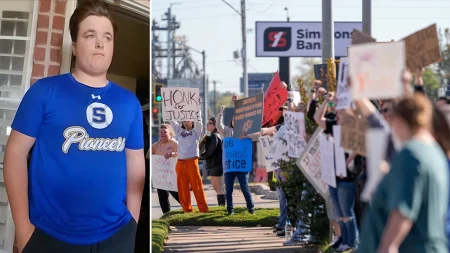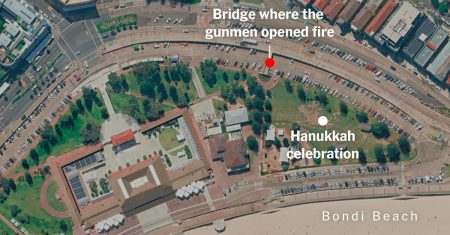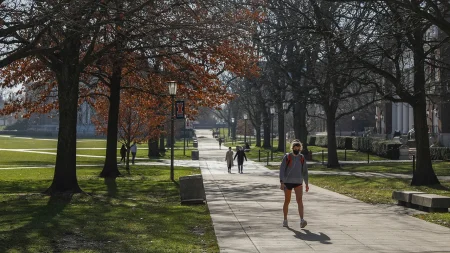Desperate Scramble: Gaza’s Humanitarian Crisis Intensifies Despite Cease-Fire
Fragile Peace Reveals Depth of Gaza’s Humanitarian Emergency
The image is haunting in its simplicity: dozens of Palestinian civilians desperately surrounding an aid convoy that had barely crossed into Gaza following the implementation of the recent cease-fire agreement. This single, powerful photograph encapsulates what months of statistics, diplomatic statements, and political posturing have failed to fully convey—the profound humanitarian catastrophe unfolding in the Gaza Strip. As the tentative quiet of a paused conflict settles over the region, the true magnitude of Gaza’s humanitarian emergency is coming into sharper focus, revealing challenges that may prove even more daunting than achieving the fragile truce itself.
The cease-fire, brokered through intense international diplomatic efforts, was meant to provide immediate relief to Gaza’s 2.2 million residents who have endured months of devastating bombardment, displacement, and critical shortages of essential supplies. Yet the chaotic scenes around incoming aid convoys tell a different story—one of a population pushed to the breaking point by hunger, thirst, and desperation. “What we’re witnessing isn’t simply a matter of logistics or distribution challenges,” explains Dr. Sarah Mahmoud, a humanitarian affairs analyst specializing in conflict zones. “This is the culmination of a near-total collapse of basic infrastructure and services in one of the most densely populated areas on earth. The cease-fire may have stopped the bombs, but it hasn’t magically restored water systems, medical facilities, or food supply chains that have been decimated over months of intense conflict.”
Beyond the Cease-Fire: The Monumental Task of Aid Delivery
The challenges facing humanitarian organizations attempting to deliver assistance to Gaza extend far beyond the temporary cessation of hostilities. Destroyed roads, damaged entry points, and compromised security conditions have created a logistical nightmare for aid agencies working to move supplies into and throughout the territory. International Relief Committee coordinator James Harrington describes the situation as “unprecedented in its complexity,” noting that “even with the cease-fire in place, we’re facing obstacles at every turn—from demolished infrastructure to coordination difficulties between various authorities controlling different parts of Gaza.” These complexities are compounded by the sheer scale of need, with humanitarian organizations estimating that virtually every resident requires some form of assistance, from emergency medical care to basic food and clean water.
The United Nations Office for the Coordination of Humanitarian Affairs (OCHA) has reported that current aid deliveries represent merely a fraction of what’s needed to prevent further deterioration of conditions. “We’re looking at a minimum requirement of 500 aid trucks daily just to meet the most basic needs,” explains OCHA spokesperson Fatima Al-Jabri. “Currently, we’re seeing nowhere near that number making it through, and even those that do enter face immense difficulties in reaching communities beyond the immediate border areas.” This shortfall means that despite the cease-fire and international attention, many Gazans continue to face severe shortages of drinking water, medicine, and food staples. Healthcare facilities, operating at minimal capacity with depleted supplies, report being overwhelmed by patients suffering from malnutrition, dehydration, and untreated chronic conditions that have worsened during the conflict.
The Human Toll: Voices from a Territory in Crisis
Behind the statistics and logistical challenges are millions of individual stories of loss, resilience, and urgent need. In Jabalia refugee camp, 43-year-old Amal Nassar describes how her family of seven has survived on one meal per day for weeks. “The cease-fire brought hope, but not bread,” she says, waiting in a line that formed before dawn for a distribution of flour and cooking oil. “My children ask when things will return to normal. I have no answer for them.” Similar accounts come from across Gaza, where families who have lost homes, livelihoods, and loved ones now face the additional burden of securing basic necessities in a landscape transformed by destruction.
Medical professionals working in Gaza’s remaining functional hospitals describe conditions that would be unimaginable in most modern healthcare settings. Dr. Khalil Rahman, surgeon at Al-Shifa Hospital’s remaining wing, reports performing procedures without adequate anesthesia, using makeshift sterilization methods, and treating patients on floors due to lack of beds. “The cease-fire means fewer trauma cases from bombings, which is certainly positive,” he acknowledges, “but we’re now seeing the secondary health crisis emerge—people with untreated diabetes, heart conditions, and kidney disease who couldn’t access care during active fighting. Children suffering from malnutrition and waterborne illnesses are flooding in.” International medical organizations estimate that rebuilding Gaza’s healthcare system will require years of sustained investment and support, even under the most favorable conditions.
International Response: Promises versus Reality on the Ground
The international community’s response to Gaza’s humanitarian crisis has been characterized by stark contrasts between public commitments and actual delivery of assistance. Major donor countries have pledged billions in aid, yet humanitarian workers report that bureaucratic obstacles, security concerns, and political considerations continue to impede the flow of supplies. “We see world leaders making impassioned speeches about the suffering in Gaza, but then we encounter inexplicable delays in getting clearance for medical shipments or fuel deliveries,” notes Maria Sanchez of Médecins Sans Frontières. “The disconnect between what’s promised on the international stage and what materializes on the ground remains one of our greatest frustrations.”
Regional dynamics further complicate the humanitarian response, with neighboring countries balancing their desire to provide assistance against complex political considerations. Egypt, which controls the vital Rafah crossing, has faced both practical limitations in processing aid shipments and delicate diplomatic pressures from multiple stakeholders. Meanwhile, international aid organizations report difficulties in maintaining impartial operations in an environment where humanitarian assistance has become increasingly politicized. “Our mandate is to deliver aid based solely on need,” explains International Committee of the Red Cross representative Thomas Weiss, “but we’re operating in a context where every action is scrutinized through political lenses. This adds layers of complexity to what should be straightforward humanitarian work.”
The Path Forward: Sustainable Solutions Beyond Emergency Relief
As the immediate emergency response continues, humanitarian experts and development specialists are already considering the longer-term challenges of rebuilding Gaza. The destruction extends far beyond physical infrastructure—economic systems, educational institutions, and social structures have all sustained profound damage that will require years, if not decades, to repair. “Even if we could magically solve the current aid delivery problems overnight, we’d still be facing an enormous reconstruction challenge,” says Urban Development Specialist Leila Hamdani. “We’re talking about rebuilding water treatment facilities, power generation, schools, hospitals—the entire backbone of a functioning society.”
The psychological impact of the conflict represents another dimension of recovery that will require specialized attention and resources. Mental health professionals warn of a looming crisis of trauma, particularly among Gaza’s children, approximately 40% of whom are under age 14. “We’re seeing alarming rates of nightmares, behavioral regression, and anxiety disorders among children who have lived through months of bombardment and displacement,” reports child psychologist Dr. Amira Suleiman. “These invisible wounds may ultimately prove as challenging to heal as the physical destruction.”
As the world watches developments in Gaza, the stark reality captured in that single photograph of civilians surrounding an aid convoy serves as a powerful reminder that cease-fires and diplomatic agreements, while essential, represent only the first step in addressing humanitarian catastrophes. The true measure of the international community’s commitment will be seen in the sustained attention, resources, and political will dedicated to not just delivering emergency aid, but supporting the long-term recovery of a population and territory devastated by conflict. For the people of Gaza, the cease-fire offers a desperately needed respite from violence, but the journey toward recovery has only just begun—and the path ahead remains fraught with challenges that extend far beyond the silencing of weapons.










